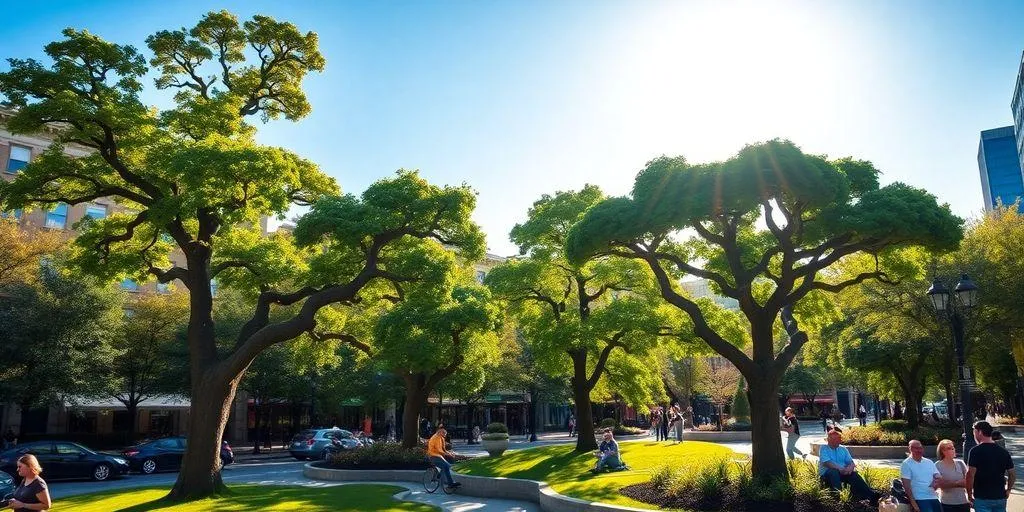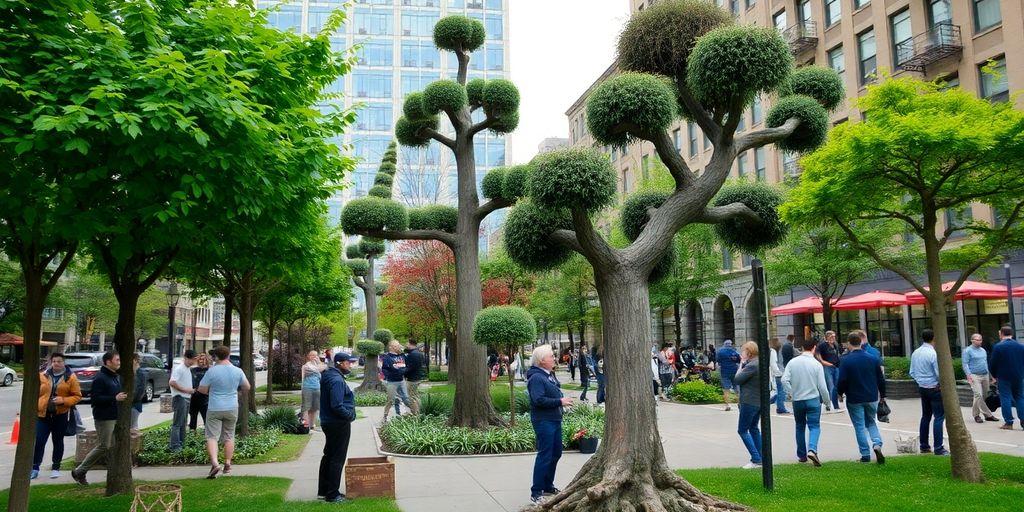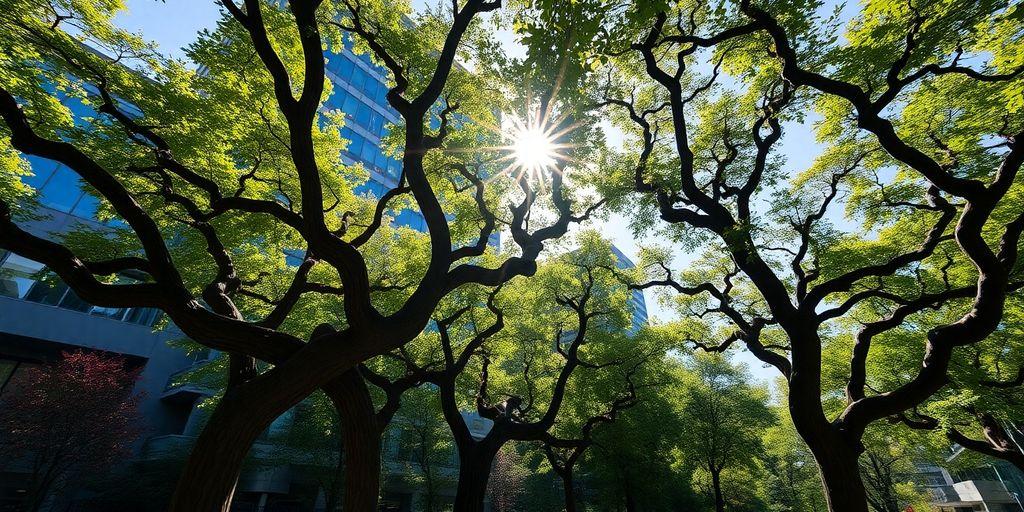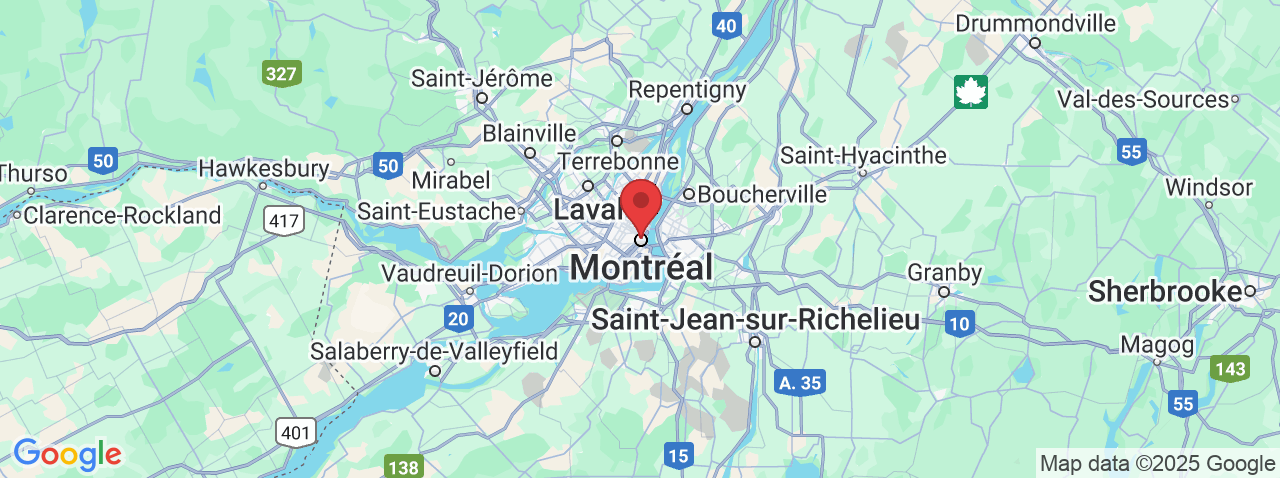Tree Service Montreal
Innovative Tree Shaping Techniques in Montreal: Transforming Urban Landscapes
Explore Tree Shaping Montreal: Innovative techniques transforming urban landscapes and enhancing city life.
Montreal's urban landscape is getting a creative makeover with the art of tree shaping. This isn't just about trimming branches here and there—it's a full-on transformation. In a city known for its vibrant culture and rich history, tree shaping is adding a new layer of aesthetic and environmental value. From historical techniques to modern innovations, these practices are reshaping how we think about greenery in urban spaces. Let's dive into how these techniques are not only beautifying the city but also bringing a host of environmental benefits.
Key Takeaways
. Tree shaping in Montreal is turning urban spaces into living art, blending nature with city life.
. These techniques are more than just for looks; they help improve air quality and reduce city heat.
. Community involvement is key, with local workshops and collaborations driving these green initiatives.
Exploring the Art of Tree Shaping in Montreal
Historical Roots of Tree Shaping
Tree shaping isn't something new; it's been around for ages. In Montreal, the art of shaping trees has its roots in both indigenous practices and European influences. Back in the day, people shaped trees for practical reasons, like creating living fences or crafting tools. Over time, this evolved into more artistic endeavors. The fusion of these traditions has paved the way for innovative designs that blend function with aesthetics.
Modern Techniques and Innovations
Today, tree shaping in Montreal is a blend of art and science. Modern techniques have allowed us to shape trees in ways that were unimaginable just a few decades ago. We use methods like grafting and bending, supported by advanced tools, to sculpt trees into stunning forms. These techniques not only enhance the visual appeal of urban landscapes but also ensure the health and longevity of the trees. It's fascinating how technology and creativity come together to transform ordinary trees into living sculptures.
Impact on Urban Aesthetics
The impact of tree shaping on urban aesthetics in Montreal is significant. Shaped trees add a unique character to the city, making public spaces more inviting and enjoyable. Imagine walking down a street lined with trees that have been artistically sculpted—it's like an open-air gallery. These green masterpieces not only beautify the environment but also create a sense of harmony and balance in the urban setting.
Tree shaping in Montreal is more than just an art form; it's a statement about how we can creatively integrate nature into our urban lives, making our city not only more beautiful but also more sustainable.
Environmental Benefits of Tree Shaping in Urban Areas

Enhancing Biodiversity Through Tree Shaping
In our cities, biodiversity can sometimes feel like it's slipping away. But guess what? Shaping trees in urban areas can actually help bring it back. By carefully crafting tree forms, we can create habitats that support a variety of species. This means more birds, insects, and small mammals can find homes right in the heart of the city. Tree shaping isn't just about aesthetics; it's about fostering life. We can even help native species thrive by designing trees that cater to their specific needs. Imagine walking down a street where the trees are alive with the buzz of bees and the chirping of birds. That's the magic of biodiversity at work.
Reducing Urban Heat with Shaped Trees
Cities can get unbearably hot, especially in the summer. You know that feeling when the concrete radiates heat like an oven? Shaped trees can help with that. By positioning trees strategically, we can create natural shade and cool down those urban heat islands. The unique forms of shaped trees can maximize shade coverage, reducing the need for artificial cooling. Plus, trees release water vapor, which cools the air. It's like nature's own air conditioning system. So, not only do shaped trees look cool, but they also keep us cool.
Improving Air Quality in Montreal
Breathing clean air is something we might take for granted, but in a bustling city like Montreal, it's a luxury. Shaped trees can play a significant role in improving air quality. They act as natural air filters, trapping dust, pollutants, and other particulates. The more surface area a tree has, the more pollutants it can capture. By shaping trees to optimize their surface area, we can enhance their ability to clean the air. It's a simple yet effective way to make our city a healthier place to live.
Shaped trees are more than just a pretty sight in the cityscape. They are vital components in creating a sustainable urban environment, offering shade, shelter, and cleaner air. Let's embrace this green revolution and transform our cities, one tree at a time.
Community Engagement and Tree Shaping Initiatives

Local Workshops and Training Programs
In Montreal, we've seen a growing interest in tree shaping, and it's not just among the professionals. Local workshops are popping up all over the city, offering hands-on training for anyone curious about the art of tree shaping. These workshops are fantastic for learning the basics and getting a feel for the tools and techniques involved. Here's what you can expect:
. Introduction to Tree Shaping: Learn about the history and significance of tree shaping in urban environments.
. Hands-on Practice: Get your hands dirty with practical sessions on tree pruning and shaping.
. Expert Guidance: Workshops are led by experienced arborists who share their insights and tips.
Collaborations with Urban Planners
Tree shaping isn't just about aesthetics; it's also about integrating nature into urban planning. In Montreal, urban planners are teaming up with tree shaping experts to create greener, more sustainable neighborhoods. These collaborations focus on:
. Designing urban spaces that incorporate shaped trees as part of the landscape.
. Ensuring that tree shaping practices align with city development plans.
. Promoting biodiversity by using native tree species in shaping projects.
Success Stories from Montreal Neighborhoods
Across different neighborhoods in Montreal, we've seen some inspiring success stories of tree shaping initiatives. These projects have transformed urban spaces, making them more inviting and eco-friendly. Here are a few highlights:
. In the Plateau-Mont-Royal area, shaped trees have become a symbol of community pride, drawing residents and tourists alike.
. The downtown core has seen improved air quality and reduced noise pollution thanks to strategically shaped trees.
. Local schools have incorporated tree shaping into their environmental education programs, fostering a new generation of eco-conscious citizens.
Shaping trees in urban areas isn't just about beautification. It's about creating a harmonious balance between nature and city life, fostering a sense of community and environmental stewardship.
Challenges and Future Prospects of Tree Shaping in Montreal

Overcoming Environmental and Technical Challenges
Tree shaping in Montreal faces a bunch of hurdles, mostly from environmental and technical sides. Urban trees often deal with poor soil, pollution, and even vandalism. These aren't just minor issues; they can really mess up tree health. We need to think about how trees adapt to city life, which is way different from their natural habitats. Managing these stressors is a big challenge that requires innovative solutions.
We also have to consider the technical aspects of shaping trees in urban areas. Trees need careful management to thrive in cities. This includes choosing the right species, ensuring proper planting techniques, and regular maintenance like pruning. Without these, trees might not survive the urban environment.
Future Trends in Urban Tree Shaping
Looking ahead, the future of tree shaping in Montreal is pretty exciting. We're seeing trends like integrating trees into urban designs and even growing them on buildings. Think about the Bosco Verticale in Milan—trees aren't just on the ground anymore.
. Vertical gardens: Incorporating trees into the architecture of buildings.
. Smart management systems: Using technology to monitor and manage tree health.
. Community-driven projects: Engaging locals in tree shaping and care.
These trends show a shift towards making trees a central part of urban life, not just an afterthought.
Policy and Support for Tree Shaping Projects
For tree shaping to really take off, we need strong policies and support from local governments. This means creating regulations that protect urban trees and encourage innovative projects.
. Financial incentives: Offering grants or tax breaks for tree shaping initiatives.
. Regulatory frameworks: Establishing clear guidelines for urban tree management and protection.
. Public awareness campaigns: Educating the community about the benefits of tree shaping.
Shaping our urban forests isn't just about aesthetics; it's about creating a sustainable future for Montreal. With the right support, we can turn our city into a green haven that benefits everyone.
